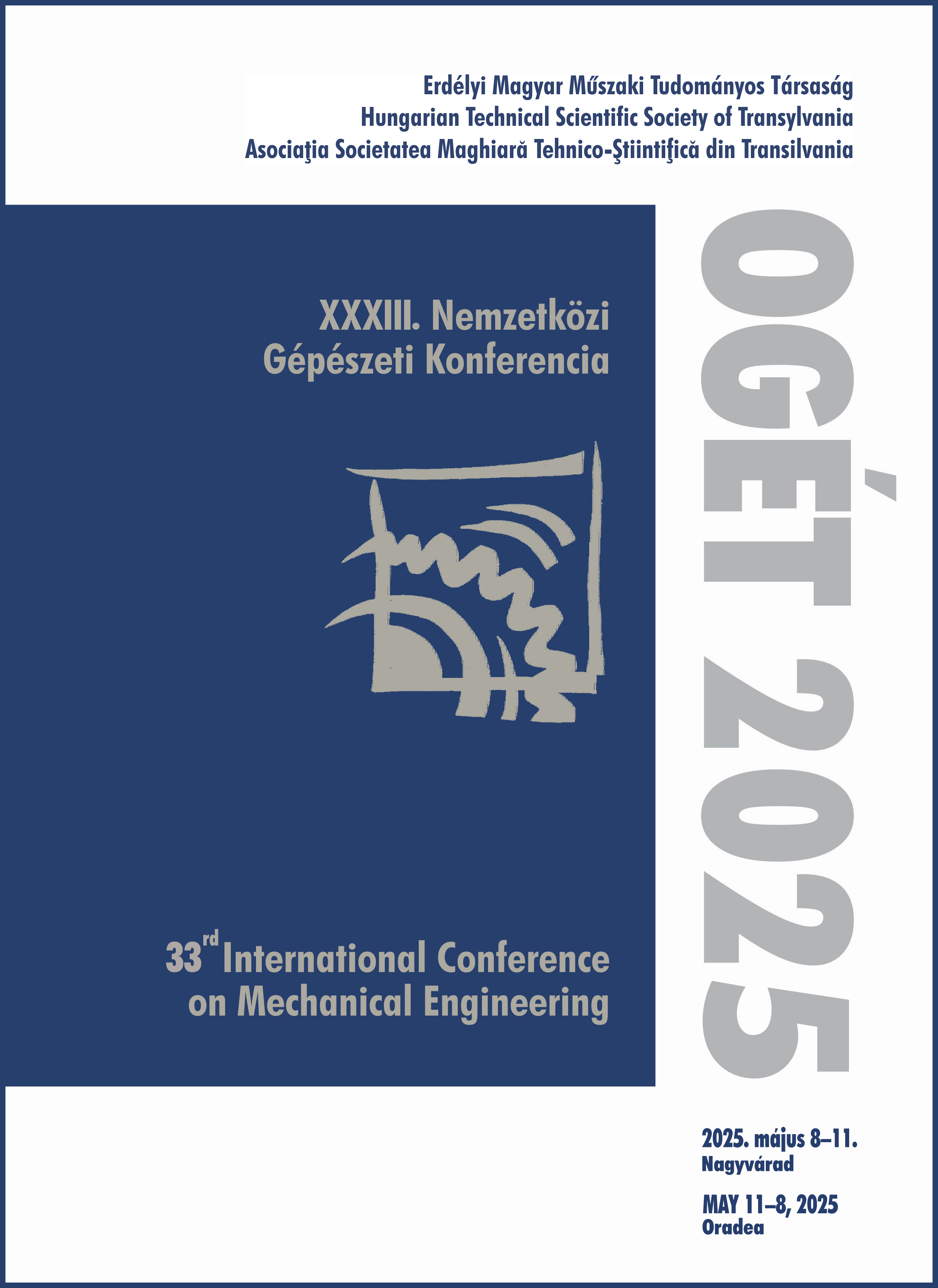Nemlineáris anyagi viselkedés adatalapú mechanikai modellezése neurális hálózatok segítségével
Data-driven mechanical modeling of nonlinear material behavior using neural networks
Keywords:
data-driven, neural network, LSTM, finite element method, constitutive law, /, adatvezérelt, neurális hálózat, végeselem módszer, anyagmodellAbstract
The development of constitutive models is challenging due to the complex, path- and time-dependent nonlinear behavior of materials, making purely analytical approaches difficult. Numerical solutions often require solving nonlinear equations, which can be computationally demanding, especially in finite element simulations. Data-driven methods offer a promising alternative by creating accurate models from large and diverse datasets, even for unknown nonlinear systems. Using a well-known one-dimensional elastic-plastic model, we generate sample data to validate this approach. The goal is to model the next state as a function of past states and current strain, requiring high accuracy to prevent error accumulation. We implement and optimize several neural network-based approaches and compare their efficiency.
Kivonat
A mechanikai konstitutív modellek fejlesztése kihívást jelent, mivel az anyagok összetett, út- és időfüggő nemlineáris viselkedést mutathatnak, ami megnehezíti az analitikus megközelítést. A megoldások gyakran nemlineáris egyenletek numerikus megoldását igénylik, ami jelentős számítási igénnyel járhat, különösen végeselemes szimulációk esetén. Az adatvezérelt megközelítés viszont lehetőséget ad arra, hogy nagyméretű és változatos mintaadat alapján pontos modelleket alkossunk, még ismeretlen, nemlineáris rendszerek esetén is. Egy ismert egydimenziós rugalmas-képlékeny anyagmodellt használunk, amely numerikusan megoldható, így tetszőleges számú mintaadat előállítható a módszer validálására. A cél a következő állapot modellezése múltbeli állapotok és az aktuális alakváltozás függvényében, amely nagy pontosságot igényel a hibák felhalmozódása miatt. A dolgozatban több neurális hálón alapuló megközelítést vizsgálunk, optimalizálunk, majd összehasonlítjuk azok hatékonyságát.
References
Ghaboussi J., Garrett Jr J., Wu X. Knowledge-based modeling of material behavior with neural networks. Journal of engineering mechanics. American Society of Civil Engineers, 1991, 117(1), 132–153.
Dornheim J., Morand L., Nallani H. J., Helm D. Neural networks for constitutive modeling: From universal function approximators to advanced models and the integration of physics. Archives of Computational Methods in Engineering. Springer, 2024, 31(2), 1097–1127.
Furukawa T., Yagawa G. Implicit constitutive modelling for viscoplasticity using neural networks. International Journal for Numerical Methods in Engineering. Wiley Online Library, 1998, 43(2), 195–219.
Lefik M., Schrefler B. Artificial neural network as an incremental non-linear constitutive model for a finite element code. Computer Methods in Applied Mechanics and Engineering, 2003, 192(28), 3265–3283. doi: https:
//doi.org/10.1016/S0045-7825(03)00350-5
Gorji M. B., Mohr D. Towards neural network models for describing the large deformation behavior of sheet metal.
IOP Conference Series: Materials Science and Engineering, 2019, 12102.
Oeser M., Freitag S. Modeling of materials with fading memory using neural networks. International journal for numerical methods in engineering. Wiley Online Library, 2009, 78(7), 843–862.
Zhang P., Yin Z.-Y., Jin Y.-F., Ye G.-L. An AI-based model for describing cyclic characteristics of granular materials. International Journal for Numerical and Analytical Methods in Geomechanics. Wiley Online Library, 2020, 44(9), 1315–1335.
Zhang N., Shen S.-L., Zhou A., Jin Y.-F. Application of LSTM approach for modelling stress–strain behaviour of soil. Applied Soft Computing, 2021, 100, 106959. doi: https://doi.org/10.1016/j.asoc.2020.106959
Gonzalez J., Yu W. Non-linear system modeling using LSTM neural networks. IFAC-PapersOnLine, 2018, 51(13), 485–489. doi: https://doi.org/10.1016/j.ifacol.2018.07.326
Kim N.-H. Introduction to nonlinear finite element analysis. Springer Science & Business Media, 2014.


